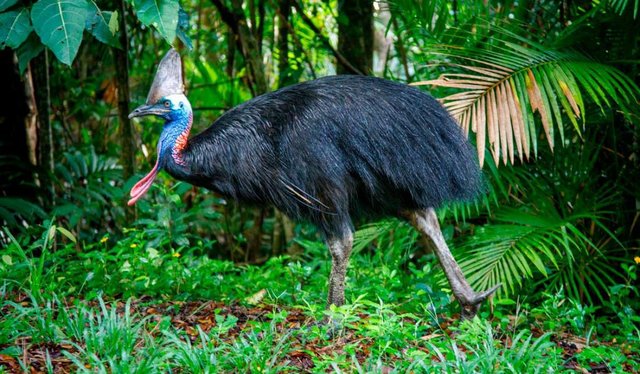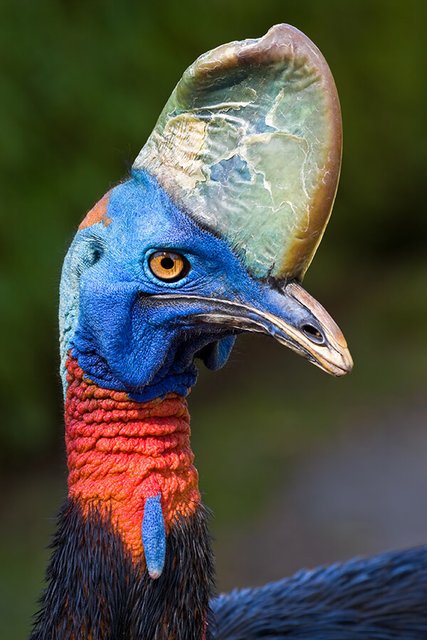The cassowary is usually considered to be the world’s most dangerous bird, at least where humans are concerned, although ostriches and emus can also be dangerous.

Cassowaries are shy and they are usually hard to spot, at least in their natural rain forest habitats. They are not overly aggressive, and attacks are rare. But they can do a lot of damage if they are provoked or angered.
Cassowaries have three-toed feet with sharp claws. The inner (first) toe has a dagger-like claw that may be 125 mm (5 in) long.
This claw is particularly fearsome, since cassowaries sometimes kick humans and other animals with their powerful legs. Cassowaries can run at up to 50 km/h (30 mph) through the dense forest and can jump up to 1.5 m (4 ft 11 in). They are good swimmers, crossing wide rivers and swimming in the sea.

Cassowaries are ratites, or birds that have flat breastbones and are unable to fly, just like their cousin, the emu. The cassowary habitat extends from the dense rainforests of northeastern Australia to New Guinea and the surrounding islands.
Size varies from one cassowary species to another. The most common cassowaries, the southern cassowaries, can be 5 to 6 feet(1.5 to 1.8 metres) tall and weigh nearly 170 pounds (77 kilograms)
“Cassowaries are the heaviest bird in Australia, and the southern cassowary is the second-heaviest in the world (the world’s heaviest bird is the ostrich),”
“With that in mind, they also have very small wings. When stretched out, their wings extend less than a foot (0.3 meters) from their body.”

There are three different species of cassowaries: the northern cassowary, southern cassowary and dwarf cassowary. The southern cassowary, often found in Northern Queensland and New Guinea, is known for its striking appearance, with bristly feathers, a vivid blue face, two red wattles and a prominent helmet, or casque.
Cassowaries are frugivores, meaning they feed on fruits. Their claws help them dig deep in the leaf litter for fallen fruit that other species might miss.
Male cassowaries play a more prominent role than female cassowaries do in rearing their young. After the female lays her eggs, the male participates in incubation and then is the primary caretaker for the young cassowary chicks after they hatch.
The female returns to her solitary life, and does not participate in incubating the eggs or caring for the young. This may be a way to allow her to have several clutches of eggs in one breeding season with different males, thus diversifying her genetics into the next generation.
Each egg weighs about 500 grams, half a kilogram.

The Cassowary is a ratite, a flightless bird in a group with ostriches, rheas, emu, kiwi.
They are a glimpse back into prehistory; if (as most modern paleontologists suggest) many dinosaurs were feathered, might they have looked a bit like this.
Some videos of Cassowaries
Cassowary dad with 2 small chicks
Cassowary Conservation Documentary 2020




